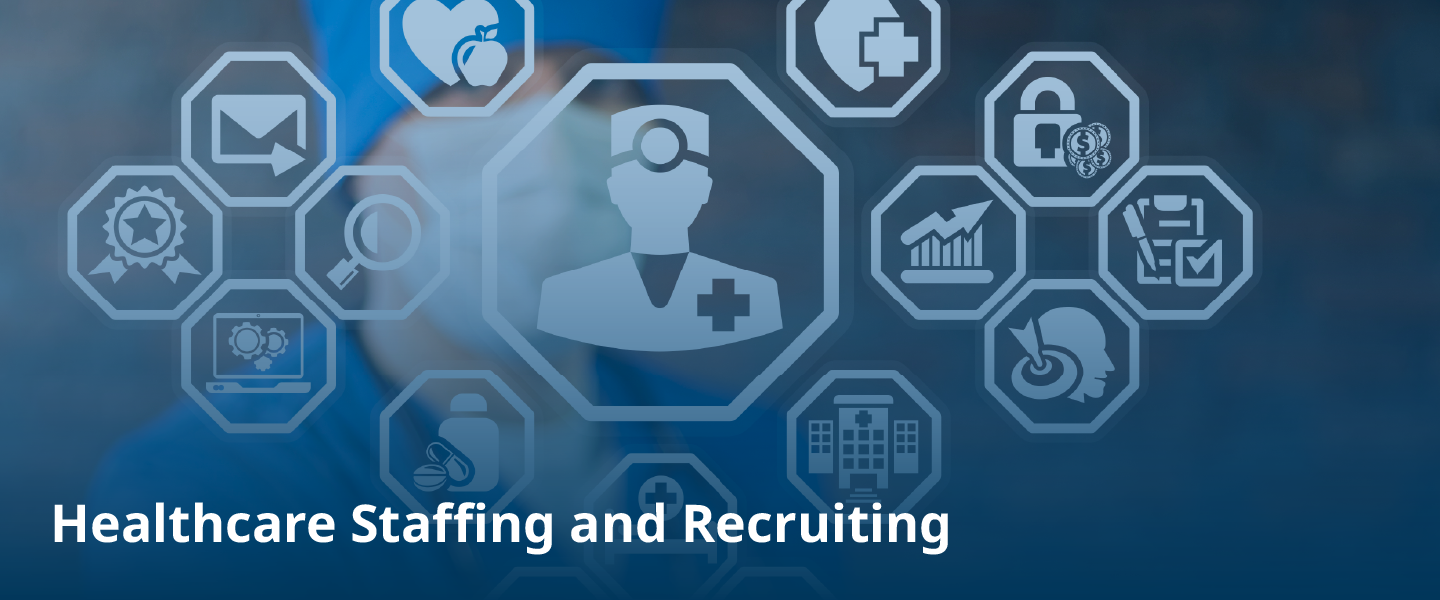According to Staffing Industry Analysts, the healthcare staffing sector grew more than three times its pre-pandemic size from nearly $19 billion in 2019 to nearly $69 billion in 2022.
Digital innovations increased recruiter productivity and efficiency, yielding quicker fill rates for healthcare professionals. Despite this growth, the industry still faces incredibly high turnover rates as burned-out workers leave the field because of poor working conditions and low pay rates.
What does this year hold for the industry? The firms that will be able to quickly grow in size and revenue will need the right strategies to attract, place, and retain top talent; incorporate technology into their workflows; and stay abreast of numerous legislative changes.
Combating Pervasive Talent Shortages
By 2027, almost one-fifth of the 4.5 million total registered nurses intend to leave the workforce, threatening the national healthcare system at large, according to the National Council of State Boards of Nursing. To curb this shortage, healthcare staffing firms must creatively recruit talent.
For example, by partnering with educational institutions and offering incentives such as scholarships, internships, or tuition reimbursements, healthcare-focused staffing firms can encourage students to pursue healthcare careers, thereby increasing the talent pool. Healthcare staffing professionals can also diversify their recruitment efforts by engaging with underrepresented groups to help further promote inclusivity in the workforce.
Additionally, leveraging technology through artificial intelligence (AI)-driven recruitment platforms and data analytics can streamline the hiring process, identifying the best talent more efficiently. From candidate engagement through onboarding and beyond, AI has played a tremendous role in meeting the demand for healthcare talent since the COVID pandemic began.
Staffing firms can also collaborate with professional associations and use social media platforms to showcase hospital or healthcare facilities’ values to enhance appeal to potential candidates. Investing in continuous professional development and offering competitive compensation packages can strengthen job satisfaction and retention rates among existing staff.
Harnessing Automation and Generative AI for Efficiency
Healthcare staffing firms can use automation and generative AI to supercharge their hiring processes, significantly enhancing efficiency and effectiveness.
Generative AI can streamline recruitment by automating repetitive tasks like resume screening, draft job descriptions and interview questions, candidate sourcing, and initial assessments. These tools use algorithms to analyze resumes, selecting top candidates based on specified criteria, and conduct preliminary interviews through chatbots or virtual assistants.
Predictive analytics can forecast staffing needs based on historical data, optimizing workforce planning and reducing vacancies. AI can also facilitate personalized candidate engagement by tailoring communication and job recommendations to individual preferences, enhancing candidate experience and attracting top talent.
Meanwhile, automation can handle administrative tasks like managing credentialing, scheduling interviews, sending follow-up emails, and coordinating onboarding processes. This allows recruiters to focus more on strategic aspects of talent acquisition, such as building strong candidate relationships and upleveling their recruitment strategies.
Navigating Complex and Ever-Changing State Requirements
Healthcare staffing professionals also face the intricate challenges associated with navigating ever-evolving state requirements and regulations, necessitating adaptive strategies. Given the diverse and often conflicting regulations across different states, regions and municipalities, staying abreast of legal nuances is critical to ensure compliance in hiring practices, credentialing, and licensing.
For example, Oregon lawmakers passed legislation that mandates specific nursing staffing ratios in hospitals. In June 2024, intensive care units will be required to staff at least one nurse for every two patients, while medical-surgical units are required to staff at least one nurse for every five patients.
To navigate these complexities, firms must establish robust systems for monitoring legislative updates and changes in healthcare laws within each state where they operate. This entails maintaining open lines of communication with legal counsel, industry associations, and government agencies to stay informed about shifts in regulations that might impact staffing procedures.
Implementing centralized databases or software that track and manage licensing and certification requirements specific to each state can streamline compliance processes. Additionally, fostering a culture of ongoing education and training among recruiting teams is vital to ensure everyone is well-versed in the latest legal mandates, so they can adapt quickly to changes and ensure smooth recruitment processes.
Looking Toward the Future
In 2024, successful healthcare staffing professionals will thrive by blending technology with human centricity.
Firms will be able to streamline recruitment processes, optimizing candidate sourcing, hiring, and onboarding. Predictive analytics will help to anticipate staffing needs, ensuring proactive talent strategies align with evolving healthcare demands.
Healthcare staffing firms focused on these strategies and tactics will be well positioned to compete and win in 2024 and beyond because the best candidates won’t last long on the market.









